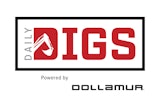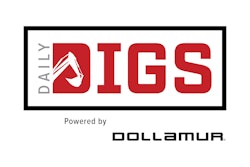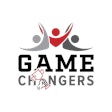Six considerations can help buyers select the ideal synthetic turf system.
With synthetic turf increasingly viewed as a safe, low-maintenance and affordable alternative to natural grass, would-be buyers should be aware that there are more options available to them today than ever before. Here are six things to consider when specifying synthetic turf to ensure years of optimal usage.
Determine which sports will use the field. Field hockey is played on a wider field than football, and a soccer pitch is wider still, so plan for adequate surface area. Moreover, the ball-roll sports favor a flat field, which may appear concave to the naked eye. To improve visual aesthetics and satisfy athletes in all sports, a barely perceptible half-degree crown can be specified.
Decide which field markings, if any, will be permanent. As many as five sports can be accommodated on one field using inlaid lines of varying colors. Five-yard-wide turf rolls are available with white yard lines tufted along one edge, facilitating football grid installation, but hash marks and curvilinear lines, letters and logos will require onsite cutting and fitting at extra cost. On blank fields, installers can inlay guide markers for multiple sports to greatly expedite the boundary painting process.
Select an appropriate fiber. Turf systems come with fibrillated blades, monofilament blades or a hybrid, which in some products eliminates the need for infill. Fibrillation provides stoutness to the blade and a fuller appearance to the field, while monofilament blades, even those strengthened by a spine, more closely mirror the appearance of grass. Performance demands of the sports to be played on the surface should dictate fiber length and tufting density, with the preferred surface for ball-roll sports being shorter blades packed more tightly together. Multipurpose fields may require compromise.
Select an appropriate infill. A mix of crumb rubber and rounded silica sand can be tweaked to performance preferences; typically the more sand, the firmer and faster the field. Sand also provides ballast, preventing the turf from shifting under heavy use. Other infill alternatives include tiny thermoplastic elastomer discs and elastomer- and acrylic-coated sand. Different colors can be specified to camouflage the infill within the turf and help minimize the field's solar heat gain.
Determine if a shock pad fits your needs. Infill synthetic turf systems are designed to function without a rubber, urethane or polypropylene shock pad, but the added resilience can bring G-max ratings within the 95-to-110 range typically found in well-maintained natural grass. The extra layer will add approximately $100,000 to the final project cost, not counting the adhesive often used for securing turf to pad. That said, the pads will likely survive at least one turf replacement and may also extend the life of each system's turf backing.
Get at least three bids. There are lots of players in the synthetic turf game. Review the project list and references of several manufacturers before committing to one. Installation typically takes two months. Your due diligence in selecting the installer should take at least as long.





































